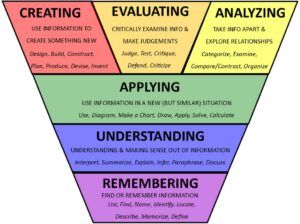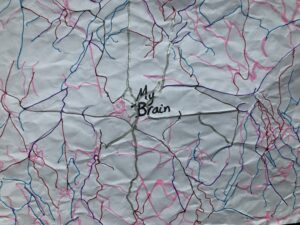How to Use this Resource
00.01.00 Where do I start?
 Photo by Mark Fletcher-Brown on Unsplash
Photo by Mark Fletcher-Brown on UnsplashDo the activities in the suggested numerical order or just do the final summative task in every area to confirm you know the material:
- the first two numbers refer to the module,
- the second two numbers refer to the topic with learning engagements leading towards a summative task,
- the last two numbers refer to the learning engagements/activities that have an order for the skills to be developed.
- How to Use this Resource (00)
- Numerical Reasoning (01)
- Abstract Reasoning (02)
- Thinking with Models (03)
- Spatial Reasoning (04)
- Reasoning with Data (05)
00.01.01 How long will it take?
The suggested times included in the Tracking and Information Booklet and listed on the website are general guidelines. You may take longer or shorter, depending on your current ability, how efficiently the linked application is working, your interest in the task, and your willingness to become more adept at some of the more mechanical procedures.
00.01.02 What level of understanding will I gain?
In general, the goal in each module is for you to reach the top levels of Bloom’s Taxonomy. The links will help you remember, understand and apply and the final task will help you create, evaluate or analyze.

00.01.03 How can I best make use of the videos?
A video is different from a live lecture in many ways, so take advantage of the opportunity to:
– stop and rewind,
– take notes,
– listen more than once,
– replay the sections you found confusing or new,
– stop and try the example yourself before the explanation,
– stop and try the example yourself after the explanation,
– use the settings clog to slow down the speaker,
– use the settings clog to add the automatic text generator,
– if you are using it as a review of something you know, use the settings to speed up the speaker or scroll through to get to the ‘good parts’,
Or, in other words, treat it like a favourite movie or YouTube video.
00.01.04 What is the difference between Hints and Keys?
For some activities, hints will be included in the resource or in the Tracking and Information Booklet. Keys or Rubrics to assess your tasks will be found in each module. It is suggested that you look at the hints to help you complete the tasks rather than look at the key or rubric before you are finished. Sometimes a rubric will be posted as a Hint. In this case, there will still be another, more clear rubric posted to help you evaluate how well you did.
00.01.05 Do I need to document my learning?
 Photo by Sear Greyson on Unsplash
Photo by Sear Greyson on Unsplash
00.01.06 What is the Tracking and Information Booklet?
This booklet will help you plan your time, track your progress, provide some general formulas and notes, and help you decide what to include as evidence of your learning. Download and possibly print the tracking and information booklet. The choice to use a booklet instead of a login system is for your privacy. Fill out the booklet as though it is how you will get paid for a job. Be honest. When items take more or less time than expected, note why. If you choose not to do everything in a module, note why. Download the booklet and print it or fill in your copy digitally. If you choose to print the booklet, you will need to add blank pages to add your comments or print one sided so you have comment space. Place your pages in a binder so you can add printouts that document and provide evidence of your work.
Information and Tracking Booklet pdf
Information and Tracking Booklet Google Doc
00.01.07 How is my privacy protected?
 “Login Key” by Got Credit is licensed under CC BY 2.0
“Login Key” by Got Credit is licensed under CC BY 2.0- Do not log in to anything.
- If you want to ensure you are not being tracked by a website, copy the link and access the resource through an incognito window.
- If the activity or link requests a login or any information, do not provide it with any information. Some sites might look like you need to sign in, but you can actually do the activity without signing in and having your work traced.
- Do not click on any popups
- If asked to supply a name, as in Kahoot!, do not use any form of your own name.
00.01.08 How can I maximize my efforts?
 Photo by LUM3N on Unsplash
Photo by LUM3N on Unsplash
1. Crumple up a piece of paper
2. Unfold the paper and trace all the lines using different colored pens, markers, crayons and/or colored pencils.
3. Label the paper ‘My Brain’
The author of this website and the university that hosts this site acknowledge with respect the Lekwungen peoples on whose traditional territory we stand and the Songhees, Esquimalt and WSÁNEĆ peoples whose historical relationships with the land continue to this day.

